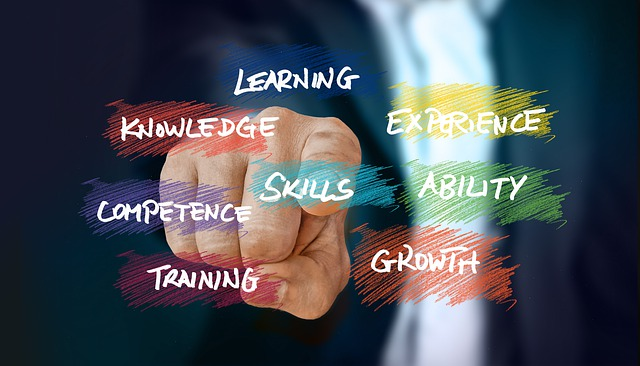Effective Communication Presentation: A Guide for Professionals
Table of Contents
Effective communication is a vital skill in today’s fast-paced professional world. It allows individuals to convey their ideas, thoughts and feelings clearly and efficiently, leading to better decision-making, collaboration and overall success. In this guide, we will explore the key elements of effective communication and provide tips for professionals on how to improve their communication skills.
In this guide, we will cover everything from the importance of active listening and non-verbal communication to effective written and verbal communication. We will also provide strategies for overcoming common communication barriers and fostering effective communication in a variety of professional settings. By the end, you will have a better understanding of what it takes to become an effective communicator in your workplace.
Importance of Effective Communication

Good talking is key for doing well at work it help to make solid bonds, push people to work together and make sure everyone does their job right. When folks talk good with others they gets better at figuring things out and making choices. But if they talks bad it causes mix-ups fights and stuff can go wrong.
Effective talking be super important in work because it let person share what they be thinking good. That mean you gotta speak so other men gets what you saying easy. Now with all folks from different place doing jobs together in the big business world these days, talking right even more serious.
Moreover active listening that are crucial part of good talking lets peoples to get and feel with other points of view. It not just help in making trust and connection but also result in improved teamwork and solving issues. Non verbal signals like the way a body moves or how they sound is important too for showing feelings and create bonds between persons.
Good talking is just as necessary for writing stuff down right. Nowadays with all them screens and tech, written words be a big piece of how we talk at work every day. That’s why being real good at writing things make sure folks get the point quick and easy like they supposed to.
Understanding the Basics of Communication

Talking with someone should be a give and take of sending messages and getting them back. Knowing how to talk right is important if you wants to share ideas good.
Active listening be a major part to talk good. It need you give all your focus on who’s speaking get what their saying and answer right. You got to keep looking in them eyes ask question for make things clear and use words or body language for show you gets it.
Another important side of talking is not using words, it often tell more than just the word by itself. The way bodies move face looks and how voice sounds all does a big job in getting feelings across and make trust with other people.
Beside paying attention and not using words when we talk it’s very important to watch the language you’re using. This mean picking the right words, how you sound and not throwing in fancy terms or techie speak that might confuse people.
Finally it’s crucial for think about who you’re talking to when you communicates. Varying audiences might got different amounts of information they knows, how well them understands and where they comes from culturally, this all can affect how messages is took and what it means to them.
Verbal and Non-verbal Communication Strategies
Talking and not-talking ways of sharing ideas are must-have for being a good talker. When you talking with words, it’s best to use plain simple talk. You got to skip extras, chat at a speed that’s ok and show stuff or pictures so people can get the tricky thoughts.
Moreover knowing how their tone of voice can really affect the way a message gets understood. Speaking with confidence and clearness helps them seem more credible and authoritative but using a gentler tone might work better for giving out sensitive or empathetic messages.
Non-verbal communication tactics mean you gotta be aware of things like body language facial expression and when you talk with people how your hands move. Like if someone keep eye contact it shows they really into the chat but if they cross their arm this might show that person ain’t agreeing or feeling defensive.
Being aware of cultural differences in non-verbal communication are also important. What might be polite or appropriate body language in one culture could not be seen the same in another culture.
Active Listening and Empathy
Active listen and empathy be critical parts for communicate well. Active listen mean you give all your focus to who’s speaking get what they trying to say and coming up with right responses.
Empathy be the skill for get and sharing other people feels. It a key part of making relationship and help to promote understand in talks. When we put ourself in another person shoe, us can more good know they viewpoint and answer with empathy.
To grow into an empathetic listener one must pay attention to the body language and how they sound of whoever is speaking. This let us catch non-verbal hints that might give away emotions or what they really feeling inside. Also by asking question that don’t have a simple yes or no answer it help the speaker to open up more which mean we gets a better grasp on what going through their mind and heart.
Showing empathy in communication also involves validating the speaker’s perspective. This means acknowledging their feelings and showing understanding, even if we may not agree with them. By doing so, we can build trust and rapport with others, leading to more open and effective communication.
Different Styles of Communication
There are various styles of communication that individuals may use depending on the situation and their personal preferences. Some common styles include assertive, aggressive, passive and passive-aggressive.
Assertive communication involves expressing one’s thoughts, feelings and needs clearly and respectfully. This style promotes open and honest communication while also considering the perspectives of others.
Aggressive communication, on the other hand, involves dominating and controlling the conversation. This style can often lead to conflicts and be perceived as disrespectful or intimidating.
Passive communication involves avoiding conflict and suppressing one’s feelings and needs. While this may seem like a peaceful approach, it can prevent individuals from expressing themselves effectively and addressing issues in their relationships.
Passive-aggressive communication combines elements of both passive and aggressive styles. It involves expressing negative feelings indirectly, often through sarcasm or subtle digs. This style can create tension in relationships and hinder effective communication.
Understanding different communication styles can help individuals become more adaptable in their interactions with others. By being aware of our own style and the styles of those around us, we can communicate more effectively and build stronger relationships based on mutual understanding and respect.
Steps to create an effective Presentation

Making a good presentation need planning preparation and to deliver it right. Here is step you follow for making a presentations that do well:
Determine the goal and audience
Before anyone starts to talk it’s key for figuring out what they want from the talking and who will be listening. The goal is about what the person sending the message wants to get done by their talking like if he wanting to tell something new make someone agree with them or make friends.
Audience means them people who gets the message and this can affect how you got to talk to them. Different audiences might not know same things or understand stuff same way cause their cultures is different which change how they sees messages.
Let’s say you wanna tell your work buddies about a fresh rule at the office, it gotta be straightforward easy to get and in words they know well. But if we’re talking ’bout reaching out to bunch of different customers, that talk needs to be custom-made for their own stuff they need and where they come from so everyone gets it right and no one gets mixed up wrong.
Moreover getting to know who you’re talking to means thinking about how much they already knows or how skilled them are in the subject you’re chatting about. Throw around too many technical terms or tough words might not be right if they ain’t got a clue ’bout what’s being talked over. It’s key for adapt your message so it fits whoever’s listening.
Research and gather information
A presentations success rely on how accurate and relevant the information is they presents. So it’s critical to spend time for research and collecting info from sources that’s credible.
For make a presentation you can do surveys talk to peoples and look at books and articles. Got to make sure that them facts you find is recent matters for the topic and helps with what you wanna show in your talk.
Additionally it’s crucial for considering what the audience need and likes when you collects data. This help to shape them message so that it connect better with they.
Create an outline or storyboard
After you have collect all the needed details it’s crucial to make a clear and logical structure for that presentation. This could be achieve by making an outline or storyboard.
An outline help organize main idea and key point of presentations while a storyboard visually shows how information flows and the way it gonna get presented. Both method allows for easy navigate through presentation to make sure all relevant infos is include.
When you make an outline or storyboard, it important to think about the audiences level of knowledge and understanding. This can help decide how much detail needed for every point and make sure that content is present in clear and concise way.
Choose a suitable visual aid
Visual aids like charts graphs, images and videos can significantly boost a presentation with they giving visual representation of informations. When picking a visual aid it’s crucial to think about the message what is conveyed and selecting appropriate visuals for support it.
For instances if presentations involve present data or stats using chart and graph, it help make info more visibly appealing and simple to grasp. On another hand using image or video can be affective in engaging audiences and add interests to they presentation.
But is crucial not to depend too much on visuals and make sure they helps the talk instead of taking away from it. They also should stay basic and be easy to get.
Design the presentation slides or materials
Design for presentation slides and stuff can really affect how good a presentation are. Picking layouts that looks nice, fonts and colors what be easy on the eyes and simple to get is important.
When you make slides him should be simple and not fill them up with lots of words or too many datas. Using bullets points or short bits can help chop up the details into pieces that’s easier for peoples to get.
Furthermore using the same branding or design features might help bind the presentation and make it more coherently. It also helps audience to remembers and recalls informations easily.
Practice and rehearse the presentation
Practicing get you to perfection, the same it’s true for making a good presentation too. It are crucial to practice and go over your presentation many time so ensuring delivery is smooth.
Doing practice can help spot any possible problem or area that needs to get better. It also helps in building up confidence and lessens the jitteriness before the real presentation happens.
In practice times it’s good for timing the presentation so it make sure that them keeps within the time they is given.
Rehearsing with a friend or colleague can also be beneficial as they can provide constructive feedback and help identify any areas that may need improvement.
So with proper research, organization, and preparation, an effective presentation can be created that will captivate the audience and achieve its intended goal of informing, persuading or building relationships. With practice and rehearsal, the delivery of the presentation will also become smoother and more engaging for the audience.
Tips for effective presentations
Be well-prepared: Research and gather information from credible sources, create an outline or storyboard, choose suitable visuals aids, and design presentation slides or materials.
Know your audience: Understand the needs, interests, and level of knowledge of your audience to tailor the content accordingly.
Keep it simple: Use clear and concise language, avoid technical jargon or complex terms, and keep visual aids simple and easy to understand.
Practice and rehearse: Practice multiple times to identify areas for improvement and reduce nervousness. Rehearsing with a friend or colleague can also provide valuable feedback.
Engage the audience: Use interactive elements such as questions, polls, or activities to involve the audience and keep them engaged.
Maintain eye contact: Make eye contact with the audience to establish a connection and build rapport.
Be confident but natural: Speak with confidence, but also be authentic and natural in your delivery.
Use body language effectively: Use hand gestures, facial expressions, and body movements to emphasize key points and add interest to the presentation.
Be aware of pacing and timing: Avoid rushing through the presentation or dragging it out for too long. Time the presentation during practice to ensure it falls within the allocated time frame.
Have a strong opening and closing: Capture the audience’s attention with a powerful opening, and leave a lasting impression with a memorable closing.
By following these tips and incorporating them into the creation and delivery of a presentation, it can be made more effective, engaging, and impactful for the audience. Remember to also seek feedback and continuously improve for future presentations.
FAQs
What are the key presentation skills needed for successful communication?
Key presentation skills for successful communication include clear articulation, effective use of body language, engaging storytelling, and the ability to adapt your message based on audience feedback. Mastering these skills helps in delivering a compelling presentation that resonates with your audience.
How can I ensure my presentation communicates effectively with my audience?
To communicate effectively with your audience, start by understanding their needs and expectations. Tailor your content to address these points directly. Use clear and concise language, and support your key messages with relevant examples or data. Additionally, interact with your audience by asking questions or encouraging participation to keep them engaged throughout your presentation.
How does self-awareness contribute to creating a compelling presentation?
Self-awareness plays a crucial role in creating a compelling presentation as it helps you understand your strengths and weaknesses as a communicator. By being aware of your presentation style, you can work on areas that need improvement, such as controlling nervous habits or enhancing your storytelling. Self-awareness also enables you to adjust your tone and body language to better resonate with your audience, making your presentation more impactful.
Can presentation skills affect the outcome of successful communication?
Absolutely, presentation skills are fundamental to the outcome of successful communication. Strong presentation skills allow you to convey your message in a clear, engaging, and persuasive manner. This not only ensures that your key points are understood but also fosters a positive connection with your audience, increasing the likelihood of achieving your communication objectives.
Conclusion
In conclusion, creating an effective presentation requires thorough research, organization, and preparation. It is important to consider the audience’s needs and level of understanding, choose suitable visual aids, design presentation slides or materials, and practice and rehearse multiple times.
By following tips such as keeping it simple, engaging the audience, maintaining eye contact, and using body language effectively, an effective and impactful presentation can be delivered. Remember to continuously improve and seek feedback for future presentations. With these skills, anyone can become a confident and successful presenter.
Related Blogs
Get 15+ Mio. PowerPoint Assets - FREE SIGN-UP

Sign up for free to our PowerPoint extension, ExpertSlides. Everything you need, directly in PowerPoint. No credit card required.
Related Posts
